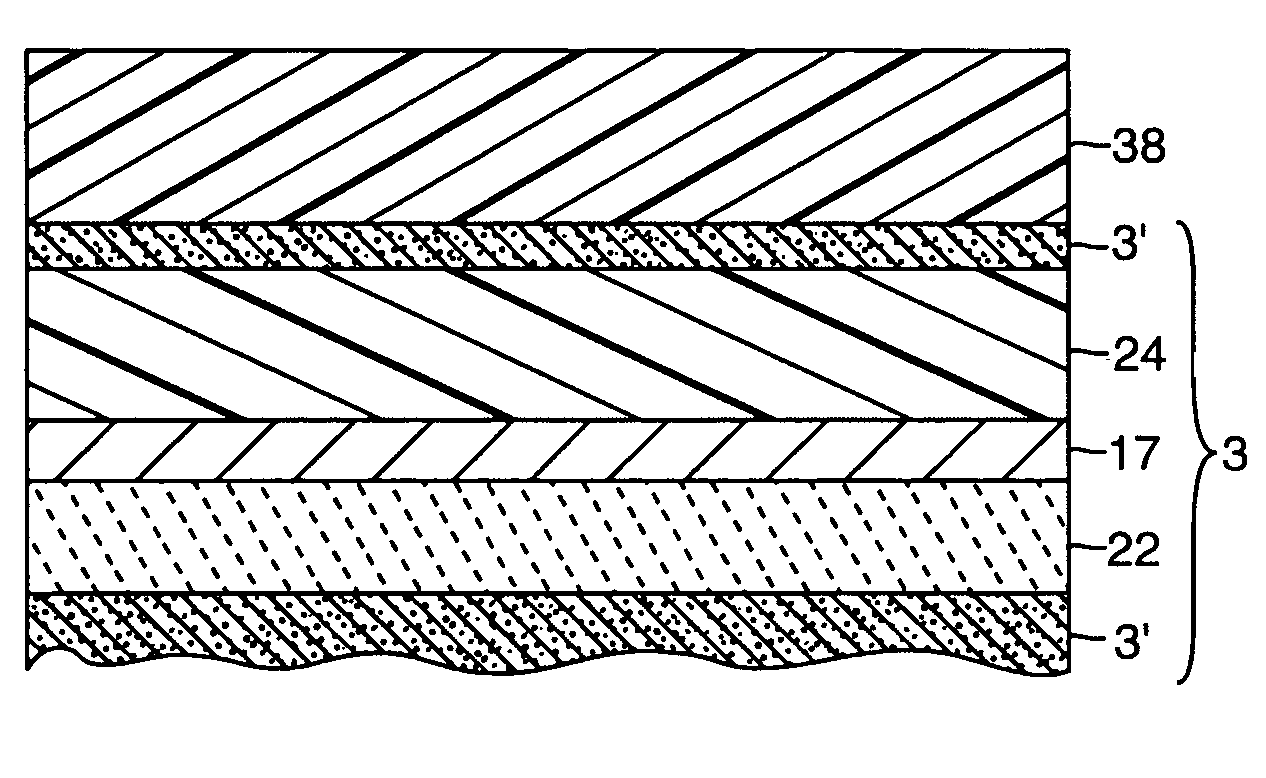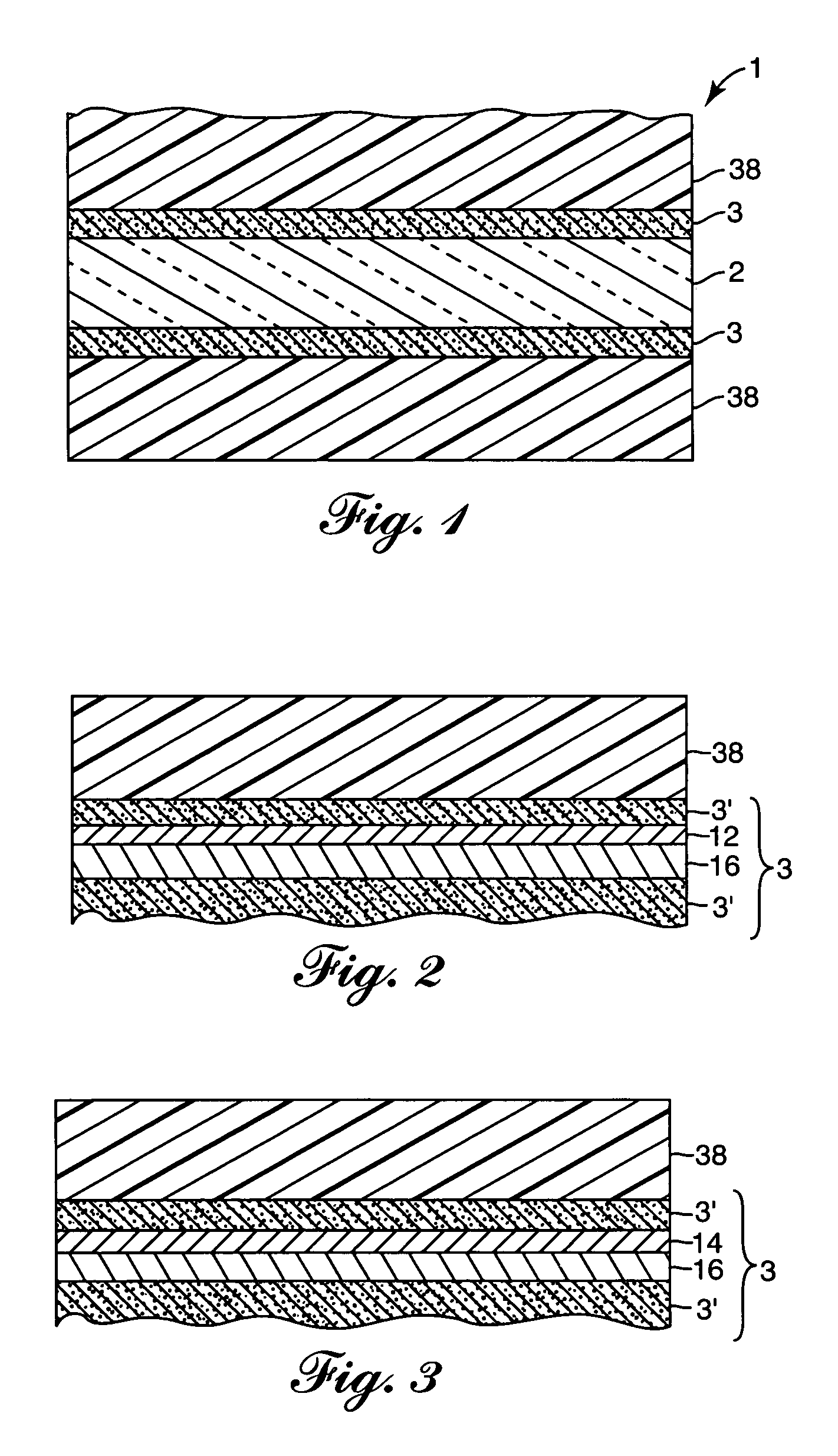Transparent conductive articles and methods of making same
a transparent and conductive material technology, applied in the field of transparent substrates, can solve the problems of low resistivity, low oxygen and water vapor permeability of the layer, and low enough resistivity to function as an electrode for the display, etc., to achieve improved ruggedness, space-saving, and more portable
- Summary
- Abstract
- Description
- Claims
- Application Information
AI Technical Summary
Benefits of technology
Problems solved by technology
Method used
Image
Examples
Embodiment Construction
[0052]A flat panel display (FPD)1, of the present invention as shown in FIG. 1, employs lightweight, flexible, plastic substrates 38 for constructing FPDs. In between two plastic substrates 38 of the flat panel display are at least two electrodes 3. At least one of the electrodes is transparent for viewing of a display medium 2 positioned between the two electrodes 3. The display medium, as well as some electrode material, are protected from oxidative degradation and reaction with or incorporation of moisture.
[0053]The displays are fabricated using plastic substrates such as various polyolefins, e.g. polypropylene (PP), various polyesters, e.g. PET and other polymers such as polyethylene naphthalate (PEN), polyethersulphone (PES), polyestercarbonate (PC), polyetherimide (PEI), polyarylate (PAR), polyimide (PI), and polymers with trade names ARTON™ (Japanese Synthetic Rubber Co., Tokyo, Japan) and AVATREL™ (B.F. Goodrich, Brecksville, Ohio). FIG. 37 shows deposition temperature capab...
PUM
| Property | Measurement | Unit |
|---|---|---|
| thickness | aaaaa | aaaaa |
| sheet resistance | aaaaa | aaaaa |
| optical density | aaaaa | aaaaa |
Abstract
Description
Claims
Application Information
 Login to View More
Login to View More - R&D
- Intellectual Property
- Life Sciences
- Materials
- Tech Scout
- Unparalleled Data Quality
- Higher Quality Content
- 60% Fewer Hallucinations
Browse by: Latest US Patents, China's latest patents, Technical Efficacy Thesaurus, Application Domain, Technology Topic, Popular Technical Reports.
© 2025 PatSnap. All rights reserved.Legal|Privacy policy|Modern Slavery Act Transparency Statement|Sitemap|About US| Contact US: help@patsnap.com



